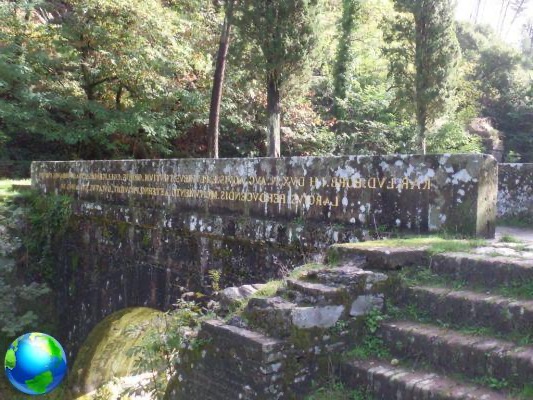Via degli Acquedotti, trekking in Tuscany between Lucca and Pisa to walk in contact with nature. Here are all the tips to make this route very easily, even for beginners.
A very pleasant spring trekking, which is done without any particular training in a single day or over a weekend. It unites the two Tuscan cities of Lucca and Pisa, which in themselves are worth a visit, and leads to discover a harmonious natural landscape. Here are my tips for a trek between Lucca and Pisa.

Spring trekking between Lucca and Pisa
I reached Lucca by train and returned home by train from Pisa (I live in Florence). Lucca and Pisa are still well connected by the railway line, even for those who reach the starting point by car.
Here's how to do the Via degli Acquedotti, trekking of 24 km. in total, which takes about eight hours (unless you stop in Vorno). It is not mandatory to bring large supplies of water (there are fountains a little along all the aqueducts) but there are not many refreshment points, as you walk mainly in the countryside.
Via degli Acquedotti
It is a path on the theme of water, the one brought to the cities of Pisa and Lucca (both of which are located in the plains, on two different sides) by two imposing hydraulic works, the Medici Aqueduct and the Grand Ducal one. The source of good quality water was on the Pisan Mountains. This trek, which can start indifferently from Lucca or Pisa, develops on the plain along the two aqueducts, but also climbs towards the mountain. The path is marked and has a logo reproduced on the indicators and which you can also see in this article.
The beginning of the path
The route that I am indicating is the one made from Lucca with arrival in Pisa, but as I have already said you can also do the reverse. Immediately behind the Lucca railway station you can find thebeginning of the path: a circular temple (a bit run down) that marks the beginning of theAqueduct of Nottolini, whose monumental arches can also be clearly seen from the A11 motorway: you walk right at the foot of the arches, in a beautiful countryside.

The aqueduct was designed by Lorenzo Nottolini and completed, after several resumptions, in 1851. The arches must have been about 500 and transported the water thanks to a particular slope.
When you get to the foot of the hill you will find a new circular temple, and the first hydraulic works: Nottolini's works, although they were public works, had an artistic feature. So the deposits and purifiers still look like works of art, among other things well preserved.
The golden words
Going up in the green you arrive at the most magical place of the whole route, a valley surrounded by greenery where a channel flows for the water regulation, there are various buildings to purify etc. The place is magically isolated and has a fascinating name, The golden words, for a Latin inscription (whose letters are gilded) on a stone bridge.
The arrival in Vorno
Continuing to climb among typically Mediterranean plants such as the strawberry tree, followed by the olive tree and also the camellia plant, so common in the Lucca area, you quickly arrive at the town of Vorno. In the inhabited center you can visit the parish church and there are several ancient villas.

Here you can stop the trek if you want, because there are some accommodation facilities. Or you can continue the climb, until you reach the pass or the highest point of the whole trek, the Campo di Croce (615 meters above sea level), on Monte Pisano, which is also the demarcation point between pine and chestnut woods.
Trekking between Lucca and Pisa: the end
From this point you go down along a forest road and with sweeping views over the plain and the sea, in a landscape very different from the one we left behind. The sides of the mountain are green, human settlements are scarce.
Going down towards Pisa along the slope of the mountain you find yourself in the Valley of the Sources, which is also a protected natural area, until you reach the so-called Cisternone just outside the town of Asciano, a water collection building and the official start of the other aqueduct of this walking route, the Pisan one.

THEPisan Medici aqueduct it was built by Ferdinando I dei Medici: the elevated pipeline flowed for six km towards the city of Pisa thanks to 934 stone arches, some not very well preserved, unfortunately.
At this point we have reconquered the plain, we walk along this fascinating "periphery" of the city of the Tower, where people walk or jog among the lights and colors of the countryside, the old Medici stones, water and particular vegetation, between including the Maclura pomifera tree, which produces a yellow and lumpy fruit that I had never seen before !!!
Once in Pisa it is inevitable to go to the center and up to Square of Miracles and finish filling up with beauty !!


























